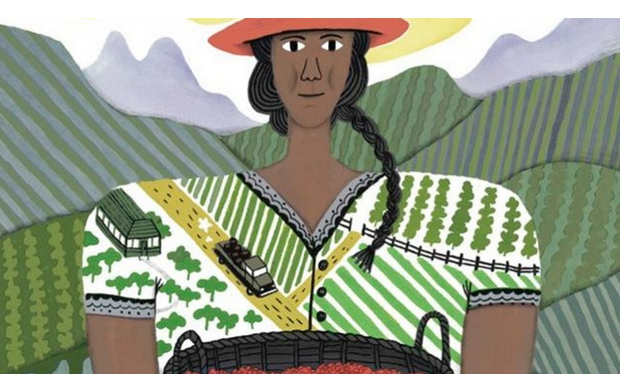Access to capital. Workplace equity. Products and services that affect the lives of women and girls.
In “The Rise of Gender Capitalism” in the Stanford Social Innovation Review, Sarah Kaplan and Jackie Vanderbrug cite Root Capital, Village Capital and the Global Alliance for Clean Cookstoves as examples of three distinct but interrelated lenses that can help investors see the world differently.
“Looking through a ‘gender lens’ helps investors gain new perspectives, highlight poorly understood inequalities, uncover new opportunities, identify blockages in the system, and find value where none was found before,” they write.
Some excerpts from the article:
ROOT CAPITAL
To understand how a gender lens can change the way investment decisions are made, consider the example of Root Capital, a nonprofit agricultural lender focused on increasing rural prosperity in Latin America and Africa. Root Capital invests in businesses that are too big for microfinance but are unable to get credit from banks—what the organization calls the “missing middle” of finance. They not only lend capital but also offer financial training to help farmers and agricultural businesses access markets.
Root Capital did not start with a gender focus, but in the course of its work the organization learned about the challenges women face in accessing resources like credit, land, training, and agricultural inputs. A gender lens became a starting point for exploring new opportunities for action. Root Capital launched a Women in Agriculture Initiative based on the belief that gender-inclusive businesses—rated by a potential client’s percentage of women leaders, women managers, women employees, and women suppliers, as well as inclusive programs and culture—can create greater financial and social impact.
Through a gender analysis, Root Capital found that effective investment in agriculture requires attention to the whole social system, from enabling land ownership for women farmers to empowering middle managers (often women) who are the hidden influencers in small agricultural enterprises, to training entrepreneurs in financial management. A gender lens led Root Capital to identify businesses in traditionally male-dominated industries that have a high impact on women, such as a Nicaraguan collective of women coffee farmers that launched the “Las Hermanas” brand of coffee. It also led Root Capital to focus more on female-dominated but sometimes neglected industries such as shea butter. As a result, a gender lens has expanded, not limited, the range of products and services the lender offers and the types of clients it serves.
VILLAGE CAPITAL
Consider Village Capital, an organization developing and funding innovative social enterprises. Finding that the traditional due diligence process was expensive and not terribly effective, Village Capital created a peer mentoring and peer selection approach that would, in their words, “democratize the entrepreneurial process.” They select cohorts of about 15 entrepreneurs in specific geographic areas and industries for a 12-week program based on peer mentoring. Village Capital commits to providing funding to the top two enterprises, which are selected on the basis of peer evaluations. The program was not specifically designed to enhance female entrepreneurs’ success, but Village Capital found that although only 15 percent of the participating companies had female co-founders, these companies represented 40 percent of the investment winners. Female co-founders have been 2.7 times more likely to get funding through this model, and the differential has increased as Village Capital has improved the structure and transparency of the programs.
“There are systematic, implicit biases that investors have in the traditional venture world that many don’t even recognize and that disproportionately favor men. When you are more structured, methodical, and transparent and your assumptions are things you have to back up, women-run ventures tend to be appropriately valued,” says Ross Baird, executive director of Village Capital.
GLOBAL ALLIANCE FOR CLEAN COOKSTOVES
The Global Alliance for Clean Cookstoves is demonstrating the power of investing in products for women. Clean cookstoves and fuels can improve health outcomes related to emphysema, cataracts, and heart disease as well as alleviate economic burdens that disproportionately fall on women and girls. The organization now has more than 1,000 partners working to build a global market for clean cookstoves and fuels. What they have found, however, is that adoption of the new cookstoves has been spotty. Some of the challenge lies in designs that do not fit the needs of the women: They are engineering solutions from companies mainly in developed economies delivering products to people in resource-poor environments.
To get people to adopt the new cookstoves, the alliance has gone beyond thinking of women as only the users of the products. They have used gender analysis to identify a whole series of best practices, from product design (observe women cooking and involve women in the design esthetics), to production (give women the opportunity to manufacture components), to financing (support financial institutions in lending to women and consider rent-to-own or micro-consignment strategies), to distribution (use gender-informed marketing messages and offer trial periods to female distributors).
“Previously, we found that cooking energy companies didn’t fully understand how a gender-informed approach could help their bottom line. Gender requirements were generally donor-driven and not seen as something that could improve their effectiveness,” says Corinne Hart, director of Gender for the Global Alliance for Clean Cookstoves. “But now they are seeing how using a gender lens can enhance their business model and increase sales and adoption of their products and services.”
Read “The Rise of Gender Capitalism” in full in the Stanford Social Innovation Review. Illustration by Kaley McKean.











